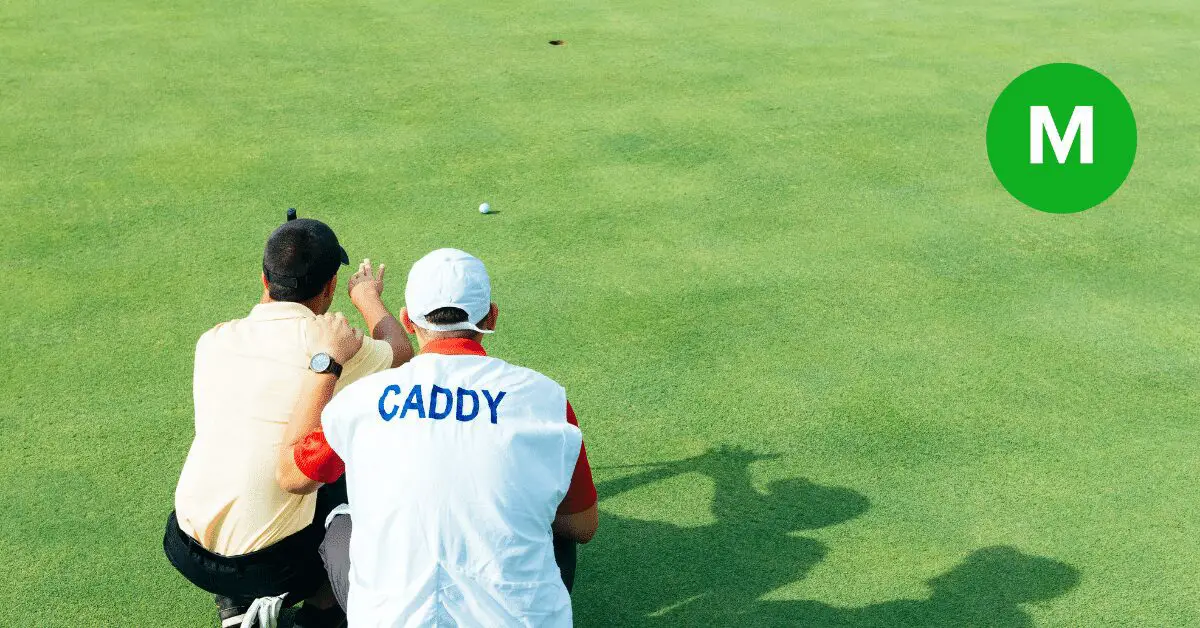Do Caddies Get Paid if Player Misses the Cut?
A lot of players miss the cut, therefore a lot of caddies miss the cut. The players don’t get paid, so you might be wondering do caddies get paid if player misses the cut?
Yes, a caddie typically gets paid an agreed amount for “carrying the bag”, so caddies do get paid even if their player misses the cut.
Remember, there is no set amount, and the numbers will vary depending on the player/caddie relationship. However, typically, caddies are paid a flat rate for the week’s work.
For example, on the PGA Tour, caddies get paid on average $1,500 to $3,000 weekly to cover expenses on the Pro Tours. Beyond that, caddies are paid by their player on their finish (performance). If the player doesn’t make the weekend and misses the cut, the caddie will take home their weekly pay covering expenses.
If a caddie’s player makes the weekend and gets paid, they usually pay a percentage. Every player/caddie relationship is different, but if the player wins, as a guide the caddie gets:
- 1st average of 10% of the winnings
- 2nd average 5 to 7%
- 3rd and below < 5% and down from there.
So, do caddies get paid if their player misses the cut? This article will explain a typical caddie’s day, whether they get paid at the Ryder Cup, Masters and basic levels of pay.
Do players that miss the cut at the Masters get paid?
Every year the Masters is held at August National. Caddies do pay their own expenses and will receive a flat rate of $1,500 for their services during tournament week. If their player makes the cut and finishes in the top 10, they can expect to earn an additional bonus.
Masters prize money for caddies
The caddy will typically get paid 10% of the Winner’s prize money, which was $2.07 million in 2019, 2020, and 2021. So the caddy would have made around $207,000.
The purse increased in 2022 to $15 million in total prize money. Scottie Scheffler, the 2022 winner, took home $2.7 million in prize money, and his caddie Ted Scott would have been in line for a $270,000 payday.
A day-in-the-life of a caddie, how much do caddies get paid at country clubs?
A caddie will call the caddy shack the night before a tournament and see if spots are available. The caddie shack will give a set tee time if there are spots.
From there, caddies will show up about 45 minutes before the tee time and are given the names of the players they will be carrying the bags for. Once they have the player’s name, the caddies get the clubs from storage and check each club to ensure they were properly cleaned before they were the last put away.
Good caddies will ensure at least two scorecards, pencils, a ball mark repair tool, and a wet towel on one end.
When the players show up, they are introduced to their caddies.
Players often go to the range or the putting green, in which case they would take whatever clubs they needed. The caddie will stand by until the players are ready to go.
From this point on, during the round of play, caddies are handed players’ clubs after the swing. The caddie’s job is to ensure the club is cleaned after use (towel), the player’s ball is cleaned once they reach the putting surface, bunkers are raked, and scores are kept. On some holes, most often when there was a blind tee shot, we would walk up the fairway and act as forecaddie, watching where the player’s drives end up.
Depending upon the player, caddies also give distances to the hole, read putts, and give advice.
After the round, caddies are responsible for thoroughly cleaning all the players’ clubs. Often not a big deal as clubs are kept clean throughout the round. Caddies return the clubs to storage and receive their pay.
Players will typically give their caddy a “tip” for their services, regardless of whether or not they make the cut, but this is not guaranteed.
Pay and Levels for Caddies
Level 1: (Beginner Caddie) Mostly 14 to 16-year-old caddies doing their first year.
Level 2: (Mid-level Caddie) A younger caddie who has been caddying for at least a year, or possibly an older caddie with some experience.
Level 3: (Experienced Caddie) Usually a bit older and experienced in caddying and golf.
Level 4: (Pros) These guys have been doing it for years, worked full time (all week long as opposed to just weekends), and were usually explicitly asked for by members.
Members had to pay a minimum fee for using a caddie, depending on the caddie’s experience.
Level 1: $15
Level 2: $25
Level 3: $35
Level 4: $45
These are the minimums, and gratuity was always added.
Gratuity depended upon the member. Some would tip $20 if you were outstanding and as little as $5 if they weren’t happy. However, some members would simply write a $50 tip, regardless of the caddie’s experience or service.
Do Ryder Cup caddies get paid?
It is well known that Players do not get paid directly in the Ryder Cup, even if they are on the winning team. So you may be wondering whether their caddies get paid?
Fortunately for the caddies — like their bosses — all their week’s travel, lodging, and meal expenses are covered. They typically get six weekly tickets to pass out and a c.$4,000 payment.
Pretty decent pay for a week’s work in an incredibly high-profile event.
Final thoughts
The bottom line is that the player and caddie agree on how the caddie is compensated, and there aren’t any rules though there are accepted conventions and practices.
Matt Kuchar was hired in Mexico last Feb at the Mayakoba Golf Classic. Before the tournament, Matt and his caddie agreed to pay him $4,000 to caddie for him. He ended up winning the tournament and made $1.3 million. He gave his caddie $1,000 more than the agreed-upon rate, for a total of $5,000.
His regular caddie would have made as much as $150,000, so the media went after Kuchar. Who was right, who was wrong? Well, technically, Matt kept up his end of the bargain, and the caddie was the one to demand more after the fact.








